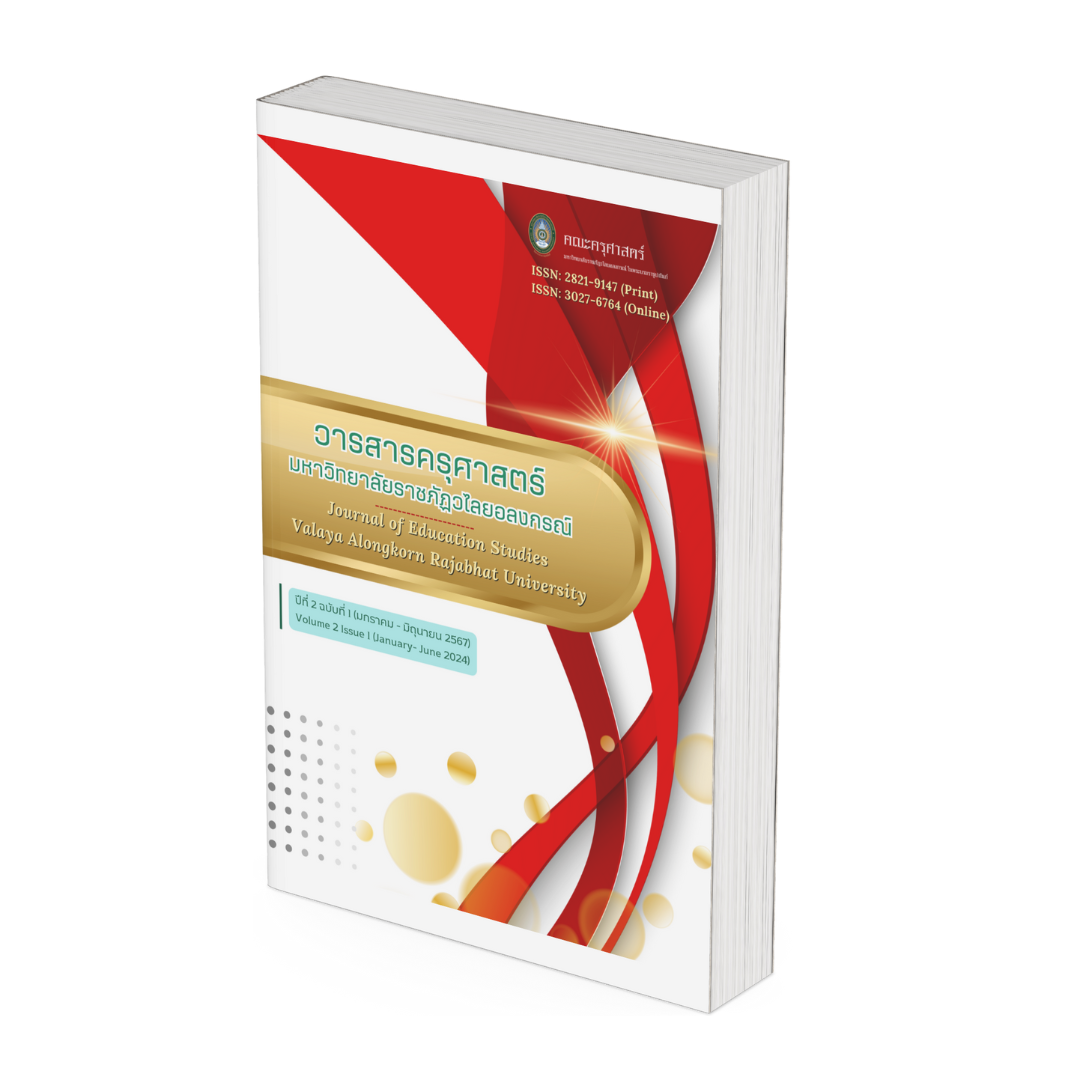The Development of Mathematical Computation Abilities on Addition and Subtraction Integers by Using Inductive Learning Management Together with the use of Multimedia Lessons for Mathayomsuksa 1 Students
Keywords:
Inductive Learning, Multimedia Lessons, Mathematical Computation Ability, Adding Integers, Subtracting IntegersAbstract
The objective of this action research was to develop mathematical computation abilities regarding addition and subtraction integers for mathayomsuksa 1 students by using inductive learning management together with the use of multimedia lessons. The research participants included 30 M. 1/3 students at Namon Pittayakhom School, Namon District, Kalasin Province who were in their first semester of the 2023 academic year. The research tools included: 1) learning management plans of which the average score was between 4.83 and 4.96. 2) mathematical calculation ability test; and 3) post-teaching recording form. The statistics used for the data analysis included percentage, mean, and standard deviation.
The research results found that in the first action cycle, mathematical computation abilities after the implementation of the lesson plans designed based on inductive learning management together with the use of multimedia lessons, 22 students passed the 70 percent criteria, accounting for 73.33 percent. In the second action cycle, 25 students passed the 70 percent criteria, accounting for 83.33 percent, and in the third operational cycle, 28 students passed the 70 percent criteria, accounting for 93.33 percent. Inductive learning management, together with the use of multimedia lessons, has the potential to help develop students' mathematical computation abilities on addition and subtraction integers to a higher level.
References
กระทรวงศึกษาธิการ. (2542). พระราชบัญญัติการศึกษาแห่งชาติ พ.ศ. 2542 และที่แก้ไขเพิ่มเติม (ฉบับที่ 2) พ.ศ. 2545. กรุงเทพฯ: โรงพิมพ์คุรุสภาลาดพร้าว. (2551). หลักสูตรแกนกลางการศึกษาขั้นพื้นฐาน พุทธศักราช 2551. กรุงเทพฯ: กระทรวงศึกษาธิการ.
โครงการ PISA ประเทศไทย สถาบันส่งเสริมการสอนวิทยาศาสตร์และเทคโนโลยี. (2556). ผลการประเมิน PISA 2012 คณิตศาสตร์ การอ่าน และวิทยาศาสตร์ บทสรุปสำหรับผู้บริหาร. กรุงเทพฯ: แอดวานซ์ พริ้นติ้ง เซอร์วิส จำกัด.
ชาญชัย ยมดิษฐ์. (2548). เทคนิคและวิธีการสอนร่วมสมัย. กรุงเทพฯ: หลักพิมพ์.
ณรงค์ ปุณนิ่ม. (2563) ครูมืออาชีพ https://ajnawarut .files. เวิร์ดเพรส.คอมณรงค์ ปุณนิ่ม.
ทิศนา แขมมณี. (2553). ศาสตร์การสอน: องค์ความรู้เพื่อการจัดการเรียนรู้ที่มีประสิทธิภาพ. กรุงเทพฯ: สํานักพิมพ์แห่งจุฬาลงกรณ์มหาวิทยาลัย.
มนัสนิต ใจดี, ชนัฎนภา พิทยานุรักษ์ และวิมาน ใจดี. (2563). ผลการใช้ m-Learning วิชาเทคโนโลยี (วิทยาการ คำนวณ) ร่วมกับการเรียนรู้แบบปัญหาเป็นฐานเพื่อพัฒนาผลสัมฤทธิ์ทางการเรียนของนักเรียน ชั้นมัธยมศึกษาปีที่ 4 โรงเรียนสงวนหญิง. ศึกษาศาสตร์ มมร, 10(1), 308.
ยศธร ศรีเมือง และสาวิตรี ราญมีชัย. (2566). การพัฒนาผลสัมฤทธิ์ทางการเรียนรายวิชาคณิตศาสตร์เรื่องทศนิยม โดยการจัดการเรียนรู้แบบอุปนัยร่วมกับแบบฝึกทักษะ ของนักเรียนระดับชั้นมัธยมศึกษาปีที่ 1. วารสารมนุษยศาสตร์ สังคมศาสตร์และนวัตกรรม มหาวิทยาลัยกาฬสินธุ์, 2(2), 11.
วิไลวรรณ พงษ์ชุบ. (2553). การเปรียบเทียบความสามารถในการคิดวิเคราะห์และทักษะกระบวนการทางวิทยาศาสตร์ของนักเรียนชั้นมัธยมศึกษาปีที่ 2 ระหว่างการจัดการเรียนรู้แบบใช้ปัญหาเป็นฐานกับแบบสืบเสาะหาความรู้. [วิทยานิพนธ์ปริญญามหาบัณฑิต]. มหาวิทยาลัยราชภัฏพระนครศรีอยุธยา พระนครศรีอยุธยา.
สถาบันทดสอบทางการศึกษาแห่งชาติ. (2566). สรุปผลการทดสอบทางการศึกษาระดับชาติขั้นพื้นฐาน (O-NET) ระดับชั้นมัธยมศึกษาปีที่ 3 ปีการศึกษา 2565.
http://www.newonetresult.niets.or.th/AnnouncementWeb/PDF/SummaryONETM3_2565
สถาบันส่งเสริมการสอนวิทยาศาสตร์และเทคโนโลยี. (2551). ตัวอย่างการประเมินผลวิทยาศาสตร์นานาชาติ: PISA และ TIMSS. กรุงเทพฯ: อรุณการพิมพ์
สำนักมาตรฐานการศึกษาและพัฒนาการเรียนรู้. (2550). การจัดการเรียนรู้แบบใช้ปัญหาเป็นฐาน. กรุงเทพมหานคร: สำนักมาตรฐานการศึกษาและพัฒนาการเรียนรู้.
Hergenhahn, B. R. (1993). dan Olson. MH.
Kemmis, S and McTaggart, R. (1988). The Action Research Planer (3rd ed.). Victoria: Deakin University.
The Institute for the Promotion of Teaching Science and Technology. (2007). Summary Report of research project TIMSS 2007. Bangkok, Thailand.






